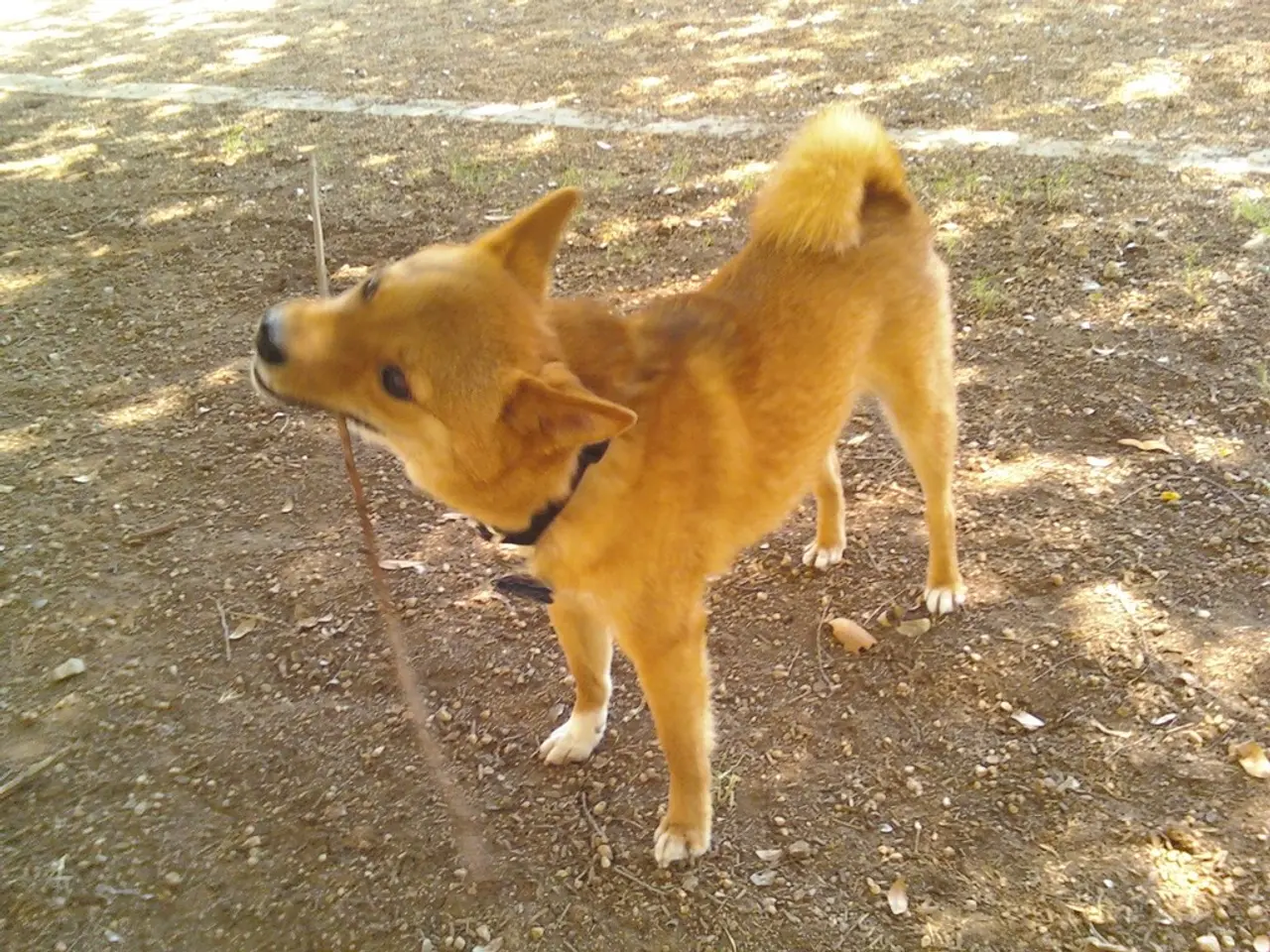Understanding Canine Aggression: Identifying Potential Triggers and Preventive Measures for Dog Bites
In the world of canine companionship, it's essential to understand and address potential behavioural issues that may arise. One such issue is food aggression, a common concern for many dog owners.
Dogs, by nature, use their mouths to interact with their environment. However, when it comes to food, some dogs may display less aggressive behaviours such as turning away, yawning, licking excessively, tucking ears and tail, crouching and shrinking, and creeping around when they are uncomfortable.
But food aggression can range from subtle to severe, and it's crucial to recognise these signs to prevent escalation. Mild signs include stiffening body posture, hovering closely over the food bowl, eating faster when approached, freezing or becoming tense during mealtime. Moderate signs may include growling, baring teeth, raised hackles (hair standing on end), lowered head posture, while severe signs could be lunging, snapping, or biting to protect food.
Additional behavioural cues include lowered tail, visible whites of the eyes, or defensive body posture during feeding times, indicating discomfort or guarding tendencies.
To prevent and manage food aggression, it's important to watch out for these less potentially dangerous signs that your pup isn't happy. Feeding dogs in a calm, low-traffic area can reduce anxiety and competition, especially in multi-pet households. Raising the dog's food bowl off the floor can lessen guarding behaviour. Hand feeding during training sessions can enhance trust and reduce aggression, though opinions differ among trainers. Avoid scatter feeding as it can increase competition and excite hunting instincts, potentially worsening food aggression.
Observe and respect your dog’s body language during meals; do not force interaction if the dog shows signs of guarding. Professional intervention, such as a certified dog trainer or behaviorist, may be needed for moderate to severe cases.
It's worth noting that food aggression is often rooted in fear or anxiety rather than dominance, so a calm, consistent feeding routine and positive reinforcement are key to prevention and treatment. If aggression appears suddenly or worsens, a veterinary checkup is advised to rule out medical causes or pain.
Lisa Burton, an award-winning dog trainer, emphasises the importance of taking food aggression seriously. She suggests that ignoring these behaviours can lead to dogs feeling they have no other option but to snap at the air or bite.
In a recent Instagram post, Lisa Burton shared insights on dog behaviour, reminding us that dog bites are not usually unprovoked. A dog's bite might be a result of unnoticed discomfort or unhappiness. Ignoring less aggressive behaviours in dogs can lead to them escalating, stiffening up, staring, curling their lip, or growling.
In conclusion, understanding and managing food aggression in dogs is a vital part of responsible dog ownership. By recognising the signs, implementing preventative measures, and seeking professional help when necessary, we can ensure a safer, happier environment for both our dogs and ourselves.
Read also:
- Exploring the Advantages of Outdoor Group Meditation for Enhancing the Mind-Body Union
- Hidden beneath the appealing aesthetic of Consume Me's artwork lies a more ominous nature
- Elderly Competitor: 96-year-old Donald makes Countdown history as the oldest contestant ever
- Reflection: Ponder the Fate of City Pigeons





